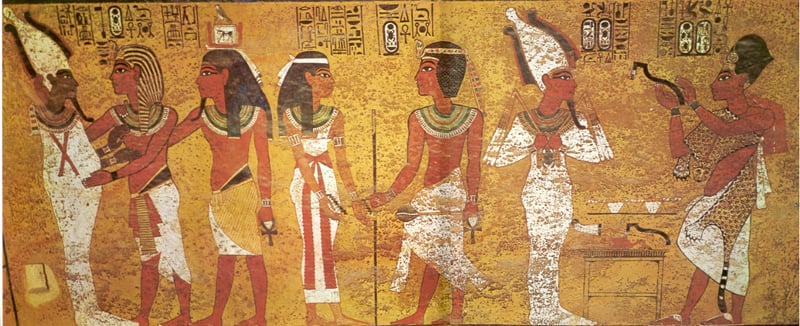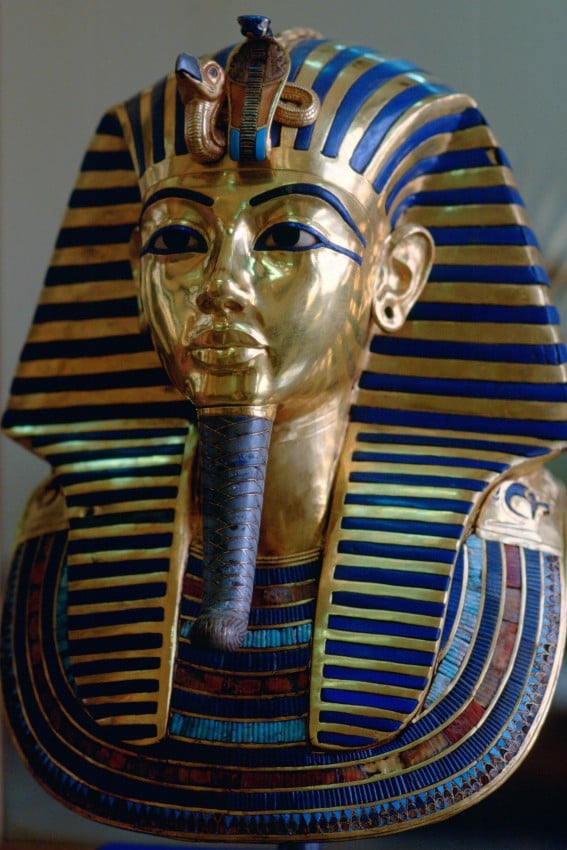Art & Exhibitions
Egypt Confirms King Tut’s Tomb Likely Holds Secret Chambers
The lost rooms could hold Queen Nefertiti's burial chamber.

The lost rooms could hold Queen Nefertiti's burial chamber.

Sarah Cascone

Archaeologists appear to be on the brink of confirming the presence of secret rooms inside King Tut’s tomb. Such a discovery could help prove a new theory that the boy king shares his final resting place with the famed Queen Nefertiti.
On Monday, Mamdouh Eldamaty, Egypt’s antiquities minister confirmed to the press that new evidence “indicates that the western and northern walls of Tutankhamun’s tomb could hide two burial chambers,” as reported by National Geographic.
Last week, the Egyptian Antiquities Ministry gave British Egyptologist Nicholas Reeves permission to test his widely publicized theory that there were traces of walled up doors in the tomb that could lead to a larger chamber containing the lost remains of Nefertiti. Reeves had previously only explored his hunch through laser scans of the original site used to create a perfect replica of the tomb.

Nefertiti bust in Neues Museum, Berlin.
Photo: Philip Pikart, via Wikimedia Commons.
“To be honest, I feel numb,” said Reeves to National Geographic about the first physical evidence to support his claims, first published in his paper “The Burial of Nefertiti?”
He believes that as much as 80 percent of the treasures in the tomb was originally created for a woman, and were repurposed to honor the young ruler. (Other recent Tut discoveries suggest he was severely crippled.)
Reeves’s preliminary investigations suggest that Tut’s burial chamber was originally a corridor, as a line on the ceiling aligns perfectly with the faint outline of the walled up doorway.
“What my Egyptian colleagues discovered is that there is a distinct difference in the surface of the surrounding wall and the central part that would be covering the door,” Reeves added. “The surrounding wall is a softer plastering. At the point where I suspect there’s a doorway, it’s quite gritty.”

The funerary mask of King Tutankhamun at the Cairo Museum, Egypt. Photo: Tim Graham, courtesy Getty Images.
Howard Carter, who first discovered King Tut’s tomb in 1922, opened the ancient chamber by unblocking a similarly plastered over door. The archaeologist saved those fragments, and an analysis suggests the material matches the area Reeves now believes is a blocked doorway. Eldamaty plans to announce the further results from radar investigations on November 4, the anniversary of Carter’s fateful find.
Now that archaeologists have determined that there is, in all likelihood, a hidden chamber inside the tomb, the challenge of exploring it without damaging the ancient wall paintings on the door remains daunting—Egypt certainly hopes to avoid fiasco’s like the inept supergluing of King Tut’s funerary mask.
Initial investigations into the closed-off chambers might be made by inserting a fiberoptic camera into a small hole, or conservators might be able to remove the wall without damaging the paintings.
Reeves is optimistic that it can be done. “I think if there’s a will, there will be a way.”